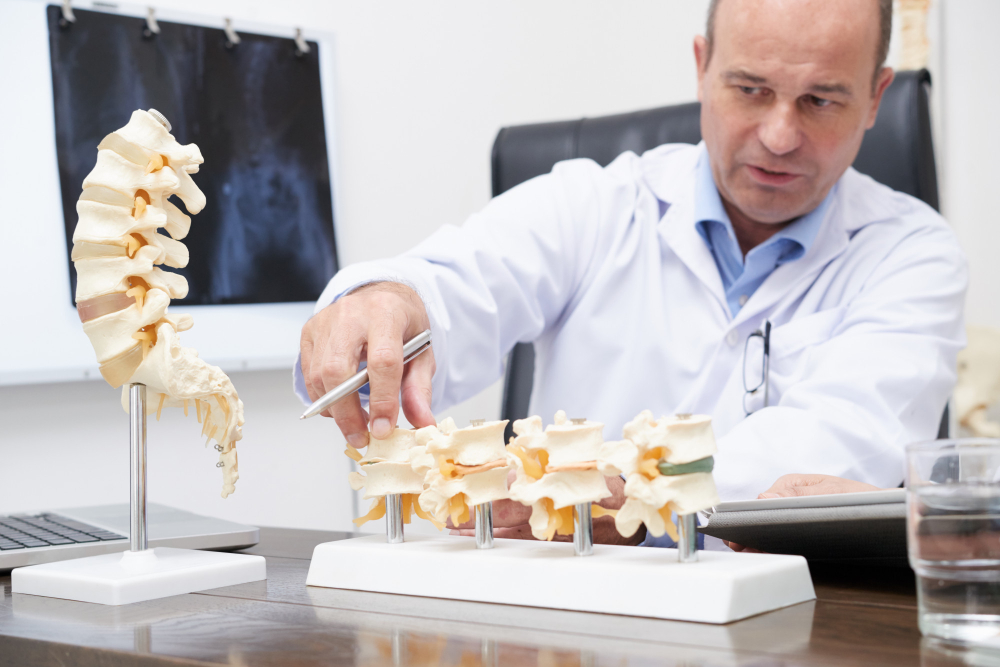The Definitive Guide to Herniated Disk Treatments

Understanding the pain and limitations that a herniated disk can cause is the first step on a complex and personal medical journey. It's a condition that touches the lives of millions, and each story is wholly unique. This blog post navigates through the maze of treatments available, clearly outlining the pros and cons to help those struggling with a herniated disk to find a pathway back to a pain-free life.
Demystifying Herniated Disks
Before we leap into treatment options, it's vital to decode what exactly a herniated disk is. The spine is a pillar of our anatomy, and disks act as cushions between the vertebrae. Think of them as the jelly donuts of the body; they have a soft center (nucleus) encased within a tougher exterior (annulus). When the annulus tears or ruptures, the soft substance inside can push out, leading to a herniated disk, also known as a slipped or ruptured disk.
This displacement can irritate nearby nerves, leading to a suite of symptoms such as localized pain, tingling, numbness, and in severe cases, weakness caused by nerve compression. The onset of a herniated disk can be sudden or gradual, and it doesn't discriminate, affecting both young and old.
Navigating Treatment Options
Upon being diagnosed with a herniated disk, patients often experience a mix of emotions—relief at understanding the source of their pain, and apprehension at the thought of treatment. Healthcare providers will assess the severity of the disk herniation and then, in collaboration with the patient, decide on the best course of action. Treatment paths can diverge greatly depending on factors such as age, overall health, activity level, and the nature of the pain.
Non-Surgical Approaches
The more conservative approach to treating a herniated disk involves non-surgical methods aimed at pain management and stimulating the body's natural healing processes.
Physical Therapy
Physical therapy exercises can reduce the pressure on the nerves, strengthen the core and back muscles, and improve posture and flexibility. Certain exercises, such as the McKenzie method, can even encourage a herniated disk to slip back into place.
Chiropractic Care
Chiropractic adjustments can help relieve nerve irritation, improve alignment, and reduce muscle spasms. Like physical therapy, the aim is to alleviate pain without the need for surgery.
Medications
Pain relievers and anti-inflammatory drugs are often the go-to for mild to moderate pain caused by a herniated disk. In more severe cases, epidural steroid injections directly to the affected area can offer more immediate relief.
Surgical Interventions
When non-surgical treatments fail to provide adequate relief, or if the individual's quality of life is significantly impacted, surgery may be considered. There are several types of surgeries, each with its own intricacies.
Diskectomy
The most common surgical procedure for a herniated disk is a diskectomy, involving the removal of the portion of the disk that's pushing into the spinal canal. This can be done through a small incision or as a minimally invasive procedure.
Laminectomy
A laminectomy, sometimes called spinal decompression, involves the removal of the lamina (the back part of the vertebra) to create more space, reducing pressure on the nerves.
Spinal Fusion
For more severe cases, a spinal fusion might be necessary. This procedure fuses two or more vertebrae together to provide stability and reduce the risk of the disk herniating again.
Alternative and Complementary Medicine
In addition to traditional medical approaches, some individuals find relief through alternative therapies, such as acupuncture, which harnesses the body's energy pathways, or yoga, which advocates claim can reduce pain and improve flexibility.
Lifestyle Adjustments
Regardless of the treatment path chosen, lifestyle adjustments can play a crucial role in recovery and in preventing future disk problems. Maintaining a healthy weight, adopting proper lifting techniques, not smoking, and avoiding activities that exacerbate symptoms are all part of a holistic treatment plan.
Personalizing Your Path to Recovery
The critical aspect of treating a herniated disk is realizing that there's no one-size-fits-all solution. Some patients might respond exceptionally well to chiropractic care, while others might find immediate relief through drug therapy. Surgical intervention, as daunting as it may sound, has had transformational effects on the lives of many individuals. Understanding and exploring all possible treatment options, guided by experienced healthcare professionals, is the best approach. It's a personal and sometimes arduous voyage, but one well worth it for the destination—reclaiming a happy and pain-free life.
Finding the Right Help for a Herniated Disk
In the quest for treatment, finding the right healthcare provider is paramount. If you're seeking for a compassionate and experienced orthopedic surgeon in Altamonte Springs, FL, to help with a herniated disk, look no further than the Central Florida Bone & Joint Institute. Don't hesitate to reach out and begin charting a path towards healing and well-being. Because, in the end, the best treatment is the one that leads you back to your best self.